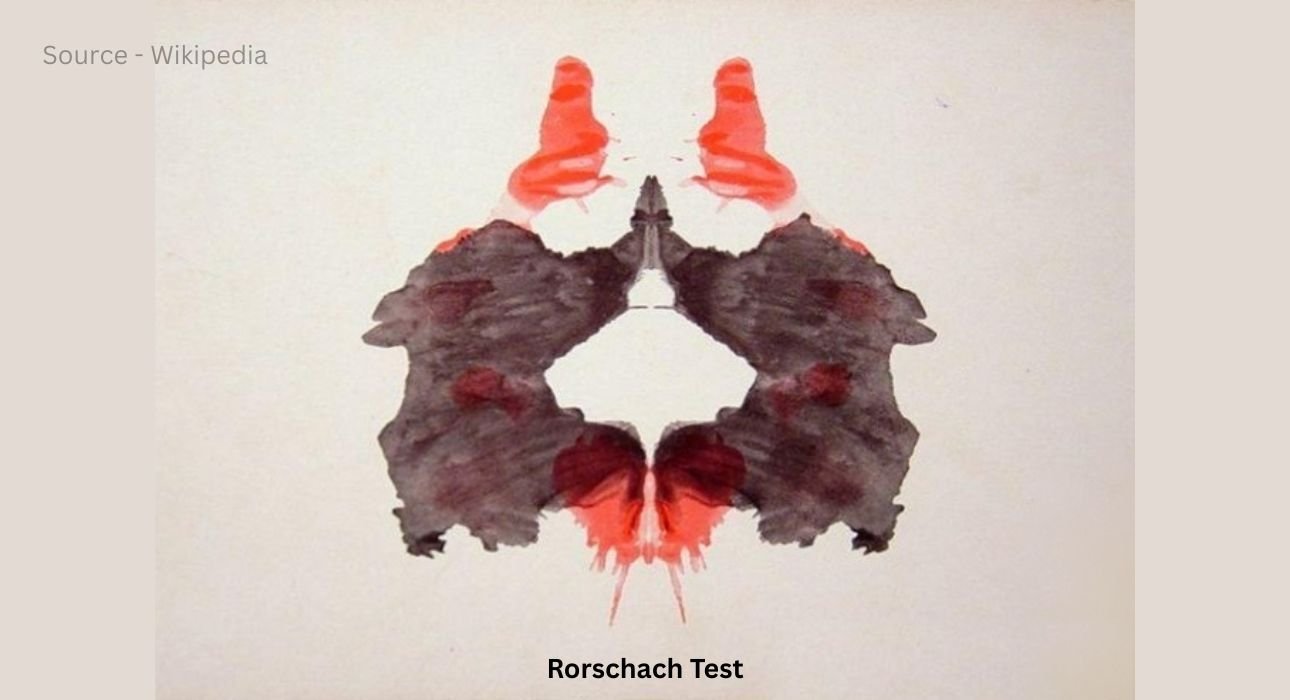In an era ruled by brain scans, artificial intelligence, and data-driven diagnosis, the Rorschach Inkblot Test, a cryptic, century-old psychological instrument, continues to captivate the public imagination while dividing expert opinion. This renowned projective test, created in 1921 by Swiss psychiatrist Hermann Rorschach, shows people a succession of abstract, symmetrical inkblots and asks them to identify what they see. The idea? These impromptu reactions act as a reflection of the unconscious, divulging underlying feelings, covert conflict, and personality characteristics that standardised tests may not detect (Weiner & Greene, 2017).
It’s like something straight out of a psychological thriller—and indeed, it often does appear in them. But under its filmmaking charm lies a more substantive issue: Is this test a window onto the human psyche, or nothing more than a Rorschach-shaped spectre that lingers on the surfaces of contemporary psychology? Clinicians have defended it and denounced it for decades, criticising its science while respecting its profundity (Lilienfeld, Wood, & Garb, 2000). As mental health treatment continues to advance, the Rorschach Test is at a crossroads: Is it an ageless psychological compass, or an artefact more appropriate for the annals of Freudian history than for modern clinical use?
Theoretical Foundations and Evolution

Origins and Purpose
The Rorschach Inkblot Test, created by Swiss psychiatrist Hermann Rorschach in 1921, was designed as a projective psychological test. Rorschach was interested in inkblots because, as a boy, he used to play the game of Klecksography by making inkblot patterns and guessing their meanings. This interest became a professional activity when Rorschach noticed that patients with schizophrenia reacted differently to vague inkblot pictures than other patients.
He hypothesised that such reactions may indicate underlying thought disorders and emotional functioning, which resulted in the creation of the Rorschach Inkblot Test as a tool to probe the unconscious mind (Rorschach, 1921; Mihura, Meyer, Dumitrascu, & Bombel, 2013).
Development of Scoring Systems
The Rorschach Test initially did not have a standardised scoring system, which resulted in variability in interpretation. Subsequently, different systems were created, but it wasn’t until 1974 that John Exner developed the Comprehensive System, a system that drew on elements from earlier approaches to provide a more standardised method (Exner, 2003). Although commonly used, the Exner system was criticised as being likely to over-diagnose psychotic illness because of the scoring system used (Hunsley & Bailey, 1999). As a reaction to continued criticism, the Rorschach Performance Assessment System (R-PAS) was created as a scientifically grounded, globally normed system of scoring that attempts to enhance test administration and interpretation reliability and validity (Meyer, Viglione, Mihura, Erard, & Erdberg, 2011).
Read More: Anorexia Nervosa: A Referred patient for Rorschach
Empirical Evidence: Validity and Reliability
Meta-Analytic Findings
The validity and reliability of the Rorschach Test have been issues of large-scale research and controversy. A meta-analysis of the test’s validity in discriminating psychopaths from non-psychopaths in forensic samples determined that although some variables had significant correlations, overall validity was modest (Gacono & Evans, 2008).
A second meta-analysis reported reliability coefficients of approximately 83 and validity coefficients of.45 to 50 for the Rorschach when hypotheses were supported by empirical or theoretical rationales and tested with strong statistical procedures (Mihura, Meyer, Dumitrascu, & Bombel, 2013). These findings imply that, under certain conditions, the Rorschach Test can be a reliable and valid instrument. However, its effectiveness may depend on the context and the specific construct being measured.
Neural Correlates
Examinations of the neural substrates of Rorschach Test responding have been investigated in more recent studies. Functional magnetic resonance imaging (fMRI) experiments have indicated that the viewing and interpretation of Rorschach inkblots stimulate brain areas related to visual processing, attention, and affect regulation (Matsumoto et al., 2006; Takahashi et al., 2012). For example, researchers have noted heightened activity in the temporo-occipital, fronto-parietal, and subcortical limbic system areas. A literature review also identified that brain activity during testing is engaged with areas that are implicated in visual, social, and emotional processing, and this indicates that the test taps into higher-order cognitive processes (Yoshida et al., 2014).
Criticisms and Controversies
Cultural and Gender Biases
The Rorschach Inkblot Test has been widely criticised as being prone to cultural and gender biases. Evolved in early 20th-century Western cultures, the test’s stimuli and interpretative paradigms might not be truly representative of the varied experiences and cultural backgrounds of non-Western individuals (Dana, 2000; Meyer et al., 2011). For example, some inkblot images may hold different meanings across cultures, prompting different responses that may be misconstrued if measured using a Western-oriented framework. This cultural insensitivity also raises issues about the applicability and fairness of the test in multicultural settings.
Gender bias also finds its way into the Rorschach Test. Response interpretation is generally based on gender stereotypes and traditional gender expectations, which can result in biased conclusions (Weiner, 2000). Emotional expression in response, for instance, will be pathologised in men because of the cultural expectation of stoicism, whereas the same expression in women would be normal. Such biases can result in misdiagnosis and the reinforcement of gender-based myths in psychological assessments (Groth-Marnat & Wright, 2016).
Issues of Validity and Reliability
Validity and reliability of the Rorschach Test have been the subject of much controversy. Reliability is test score stability over time and across different examiners. Large inter-rater differences have been described, where different clinicians will rate the responses differently, and thus the test will be unreliable (Lilienfeld et al., 2000). Despite the use of standardised scoring systems like the Exner Comprehensive System, there is variability, and this creates a question regarding the test’s stability (Wood, Nezworski, Lilienfeld, & Garb, 2003).
Validity, how much the test is measuring what it is supposed to measure, is also a problem. Some evidence exists that the Rorschach Test lacks predictive validity for the majority of psychological disorders. While some studies suggest small correlations with certain illnesses, such as schizophrenia, the majority of evidence regarding the diagnostic usefulness of the test is weak (Hunsley & Bailey, 1999; Garb, Wood, Lilienfeld, & Nezworski, 2002). This weak empirical support reduces the test’s value in clinical practice.
Ethical and Practical Implications
The moral implications of applying the Rorschach Test, especially in legal settings, are profound. With the test being subjective and of questionable accuracy, its employment within judicial settings like custody cases or criminal proceedings has far-reaching implications (Gacono & Evans, 2008). Misunderstandings can lead to unjust results, so caution and careful analysis are necessary when applying the test to high-stakes settings.
In practice, the administration and scoring of the Rorschach Test are time-consuming and require long training. In the age of efficiency and evidence-based practice, the resource intensive nature of the test presents a hurdle to its adoption on a broad scale (Weiner & Greene, 2017). Clinicians have to balance the benefits and costs of using the Rorschach Test against other measures that could be more reliable and valid with fewer resources.
Contemporary Perspectives and Applications
Clinical Utility and Integration
Despite its criticisms, the Rorschach Inkblot Test is still used in clinical practice, appreciated for its ability to reveal aspects of personality not readily accessible by self-report measures (Meyer et al., 2011). Practitioners usually administer the test as part of a broad battery of tests, combining its results with other instruments to guide treatment planning. Multimethod procedures can add to the richness and scope of psychological assessments (Weiner, 2000).
Additionally, the projective nature of the test permits the probing of unconscious processes, yielding information about a person’s internal world. When carefully interpreted and combined with other information, the Rorschach Test can add rich information to the treatment process, assisting in hypothesis formation regarding a client’s functioning and guiding intervention approaches (Mihura et al., 2013).
Research and Educational Applications
In educational environments, the Rorschach Test has been utilised as an instructional tool to teach personality assessment, projective methods, and qualitative data interpretation concepts (Groth-Marnat & Wright, 2016). Research applications have diminished, due mainly to concerns regarding their psychometric properties. Nevertheless, there are still certain studies that investigate its utility, especially in making sense of complicated psychological phenomena and in cross-cultural studies (Dana, 2000).
Educationally, the test provides students with the chance to study historical and current controversies in psychological testing, and critical consideration of the construction, use, and interpretation of psychological tests. From studying the Rorschach Test, students can gain an understanding of the role of reliability, validity, and ethical issues in psychological practice (Weiner & Greene, 2017).
Evolution and Future Directions
Attempts to correct the Rorschach Test’s weaknesses have led to the development of revised scoring systems, such as the Rorschach Performance Assessment System (R-PAS), that aim to improve its validity and reliability. These developments show a desire to enhance the test and bring it into line with modern standards of psychological testing (Meyer et al., 2011). There must be ongoing research and debate to determine the role of the test in modern psychology and to offer assurance for its effective and ethical use (Mihura et al., 2013).
In conclusion, while the Rorschach Inkblot Test is amenable to appropriate criticisms regarding its psychometric characteristics and cultural sensitivity, it remains a test of value in certain clinical and educational contexts. Its longevity as a test necessitates careful application, complementation with other measures, and ongoing evaluation and refinement.
Conclusion
The Rorschach Inkblot Test holds a controversial but persistent place in psychological testing. Although it offers unique insights into the human mind, researchers cannot disregard concerns about validity, reliability, and cultural sensitivity. Improvements in scoring systems and neuroimaging studies have improved its scientific validity, but controversy lingers on. In the end, the Rorschach Test is best used as a supplementary tool within a broader assessment battery, rather than as a standalone diagnostic instrument. Its Sustained utility will rest on continued empirical support and accommodation to varied cultural settings.
FAQs
1. What is the Rorschach Inkblot Test, and how does it work?
The Rorschach Inkblot Test is a projective psychological assessment where individuals interpret ambiguous inkblots, with the idea that their responses reveal unconscious thoughts, emotions, and personality traits.
2. Is the Rorschach Test still used in modern psychology?
Yes, although controversial, the Rorschach Test is still used in some clinical and educational settings. It is typically used as part of a broader psychological assessment rather than a standalone diagnostic tool.
3. How valid and reliable is the Rorschach Test?
Meta-analyses suggest moderate reliability and variable validity, with more recent scoring systems like R-PAS improving its psychometric support, though criticisms about over diagnosis and subjectivity persist.
4. What are the major criticisms of the Rorschach Test?
The test has faced criticism for cultural and gender biases, low predictive validity for most disorders, inconsistent scoring between raters, and ethical concerns regarding its use in legal or high-stakes contexts.
5. How has the test evolved?
Initially lacking standardisation, the test evolved through scoring systems like Exner’s Comprehensive System and, more recently, the R-PAS, which aim to enhance its scientific rigour and global applicability.
6. What role does the Rorschach Test play in education and research today?
While its research use has declined, the Rorschach Test remains a valuable educational tool for teaching students about psychological assessment, psychometrics, and ethical considerations in test interpretation.
References +
- Acklin, M. W., McDowell, C. J., Verschell, M. S., & Chan, D. R. (2000). Interrater reliability of the Rorschach Comprehensive System: A meta-analyƟc study. Psychological Assessment, 12(4), 356–365. https://doi.org/10.1037/1040-3590.12.4.356
- Archer, R. P., & Handler, L. (2007). Using the Rorschach performance assessment system (R PAS) with children and adolescents. Taylor & Francis.
- Baity, M. R., & Hilsenroth, M. J. (2001). Advances in Rorschach research: New direcƟons for an old test. Journal of Personality Assessment, 77(1), 1–6. https://doi.org/10.1207/S15327752JPA7701_01
- Bornstein, R. F. (2001). The impending death of psychoanalysis. PsychoanalyƟc Psychology, 18(1), 3–20. https://doi.org/10.1037/0736-9735.18.1.3
- Gacono, C. B., & Evans, F. B. (2008). The handbook of forensic Rorschach assessment. Routledge.
- Giromini, L., Viglione, D. J., Zennaro, A., & Zuffianò, A. (2017). A review of Rorschach research in Italy: R-PAS, CS, and the future. Rorschachiana, 38(1), 27–55. https://doi.org/10.1027/1192-5604/a000097
- Lilienfeld, S. O., Wood, J. M., & Garb, H. N. (2000). The scienƟfic status of projecƟve techniques. Psychological Science in the Public Interest, 1(2), 27–66. https://doi.org/10.1111/1529-1006.002
- Mihura, J. L., Meyer, G. J., Dumitrascu, N., & Bombel, G. (2013). The validity of individual Rorschach variables: SystemaƟc reviews and meta-analyses of the Comprehensive System. Psychological BulleƟn, 139(3), 548–605. https://doi.org/10.1037/a0029406
- Meyer, G. J., Viglione, D. J., Mihura, J. L., Erard, R. E., & Erdberg, P. (2011). Rorschach Performance Assessment System: AdministraƟon, coding, interpretaƟon, and technical manual. R-PAS.
- Nikolin, S., Boonstra, T. W., Loo, C. K., & MarƟn, D. M. (2021). Combined neuroimaging and neuropsychological techniques for understanding brain funcƟon in clinical psychology. Neuroscience and Biobehavioral Reviews, 125, 174–186. https://doi.org/10.1016/j.neubiorev.2021.02.038
- Schultheiss, O. C., & Pang, J. S. (2007). Measuring implicit moƟves. In R. W. Robins, R. C. Fraley, & R. F. Krueger (Eds.), Handbook of research methods in personality psychology (pp. 322–344). Guilford Press.
- Stanton, K., & Zimmerman, D. (2017). Meta-analysis of the relaƟonship between the Rorschach and MMPI/MMPI-2 in assessing psychopathology. Journal of Personality Assessment, 99(5), 533–544. https://doi.org/10.1080/00223891.2017.1288122
- Weiner, I. B. (2001). Advancing the science of psychological assessment: The Rorschach Inkblot Method as exemplar. Psychological Assessment, 13(4), 423–432. https://doi.org/10.1037/1040-3590.13.4.423
- Wood, J. M., Lilienfeld, S. O., Garb, H. N., & Nezworski, M. T. (2000). LimitaƟons of the Rorschach as a diagnosƟc tool: A criƟque of methodological and interpreƟve issues. Journal of Clinical Psychology, 56(12), 1351–1371. 10.1002/(sici)1097- 4679(200003)56:3<441::aid-jclp19>3.0.co;2-q
- Wood, J. M., Nezworski, M. T., Lilienfeld, S. O., & Garb, H. N. (2003). What’s wrong with the Rorschach? Science confronts the controversial inkblot test. Jossey-Bass.













Leave feedback about this